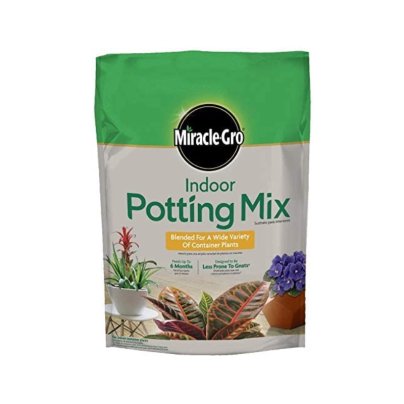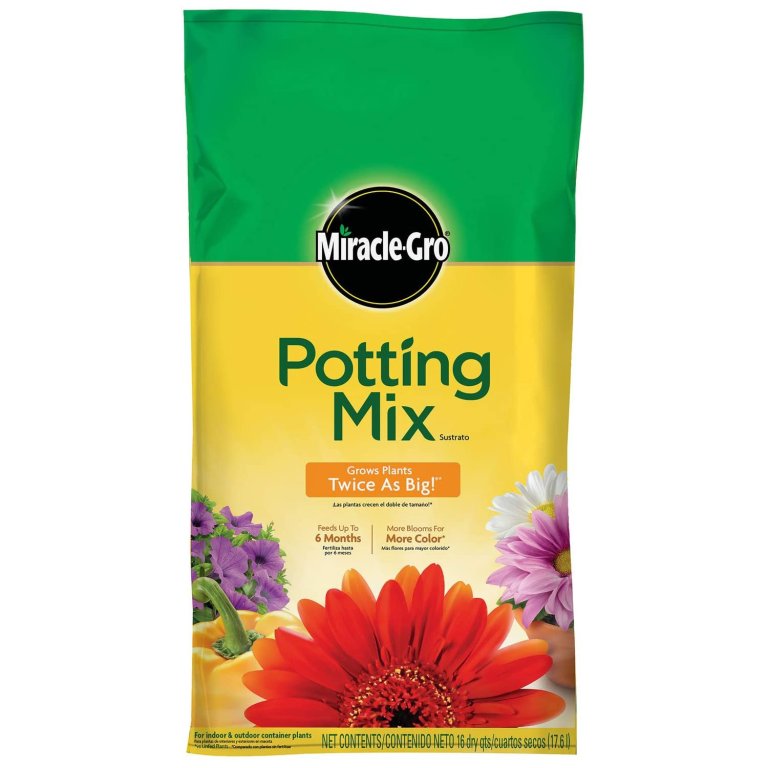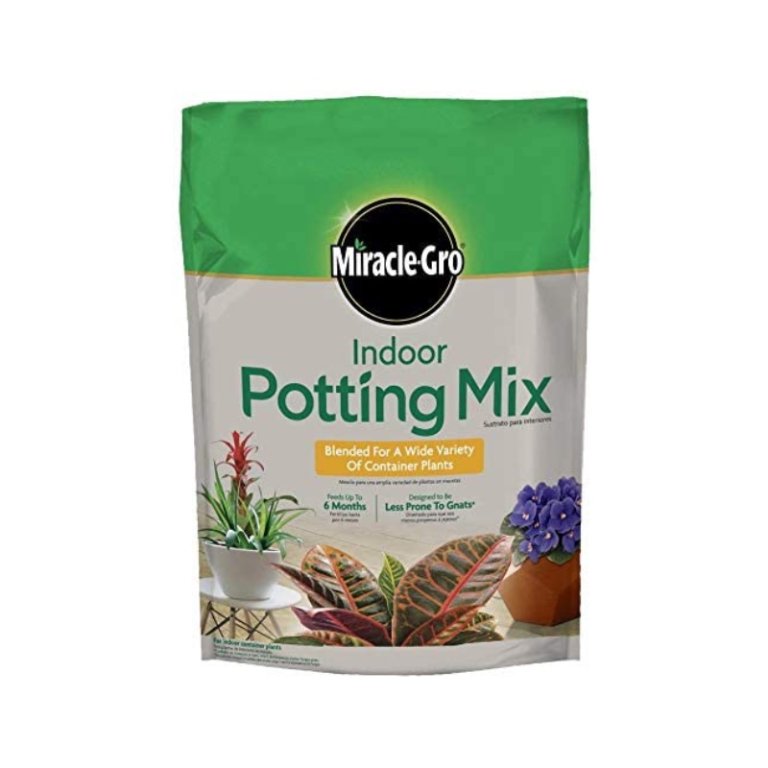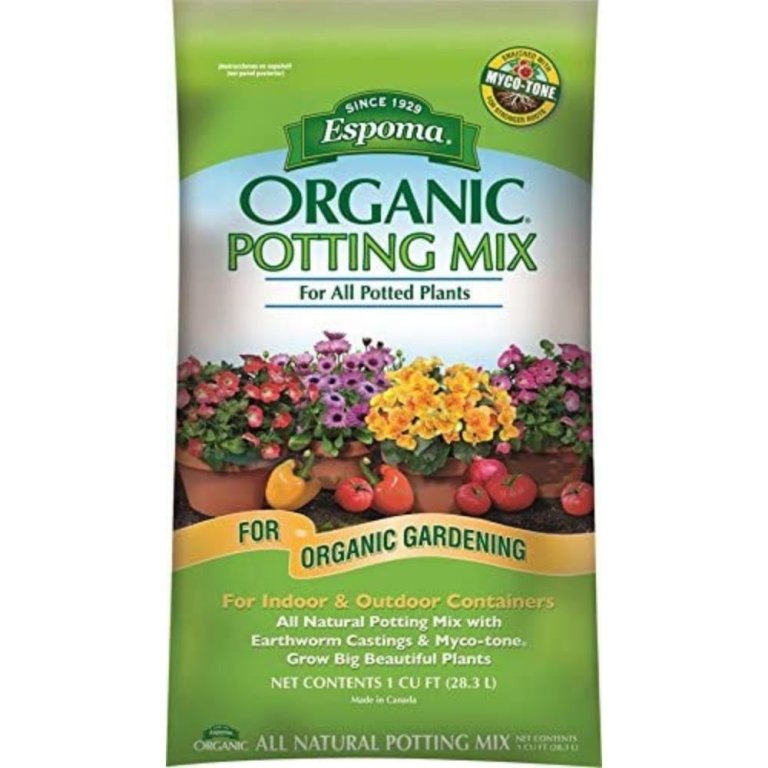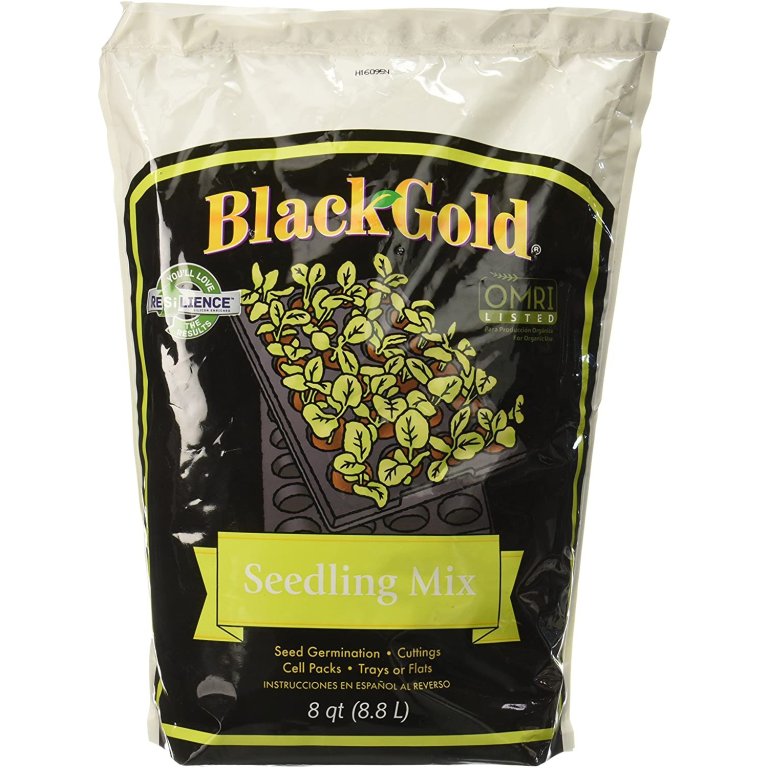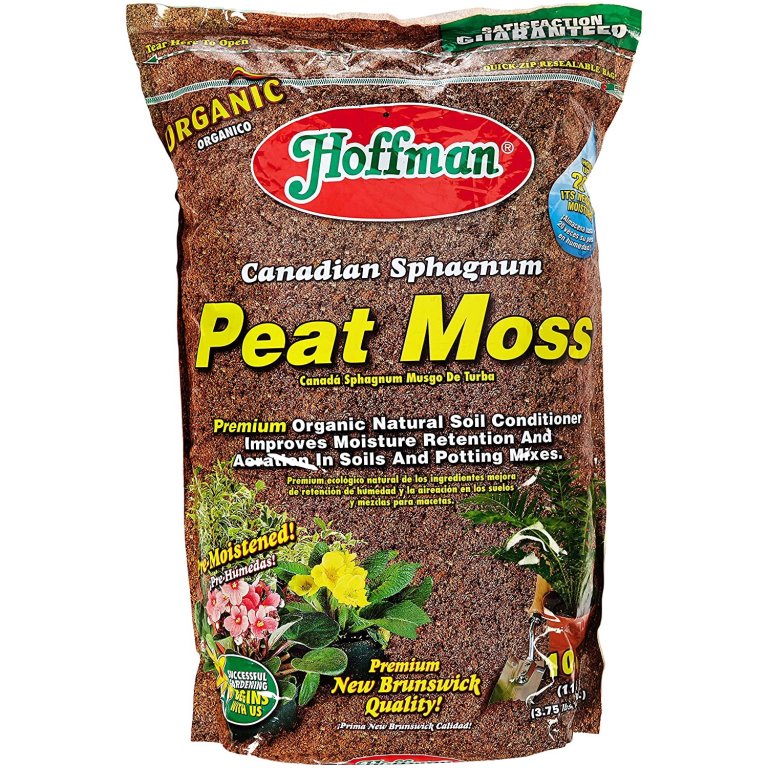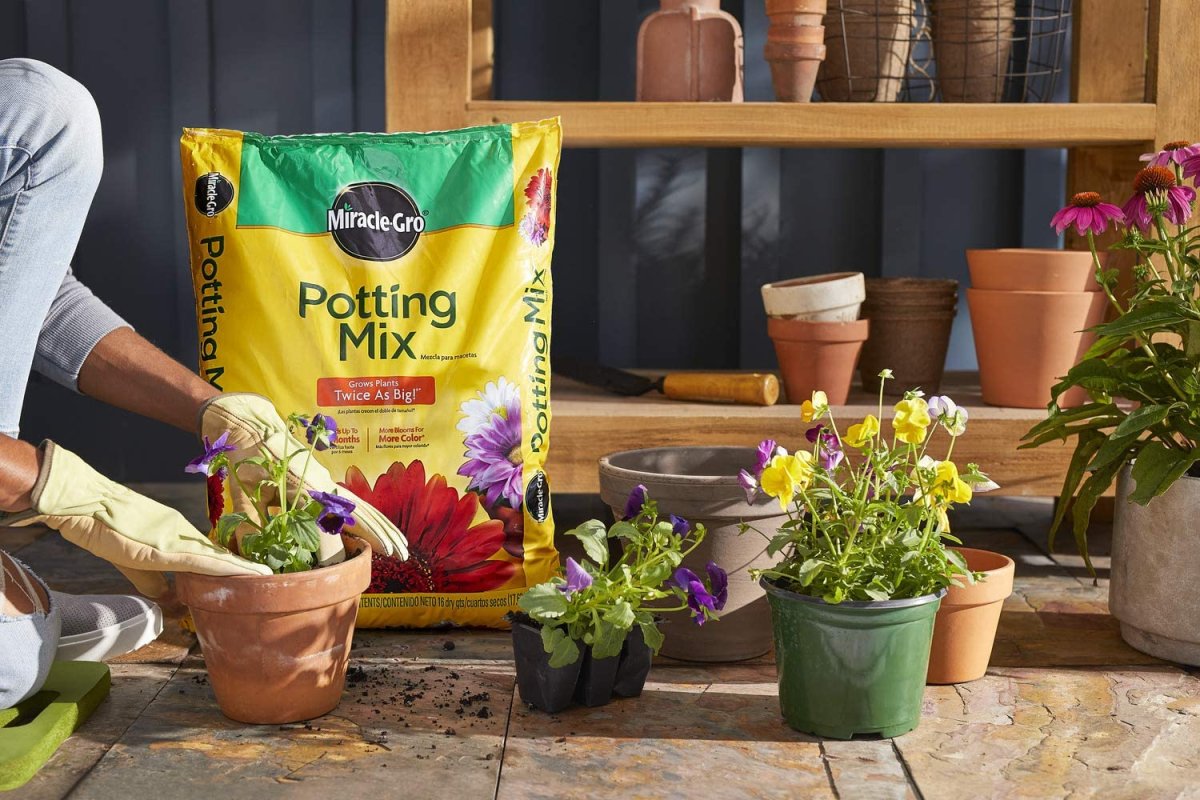
We may earn revenue from the products available on this page and participate in affiliate programs. Learn More ›
From miniature blooms to hybrid tea varieties, roses are beautiful plants that can brighten up any home or office with their colors and scent. While planting roses outdoors is likely more common, it’s certainly possible to grow roses indoors in the right conditions.
When growing them indoors, the best soil for roses provides these flowers with the ingredients and nutrients they need to flourish. Whether you’re thinking about purchasing a certain type of soil or just wondering about the nutrients that roses need to thrive indoors, this guide is for you.
Keep reading to explore several of the key considerations to keep in mind as you shop, and then discover the top picks for the best soil for roses when you want to grow these plants indoors.
- BEST OVERALL: Miracle-Gro Potting Mix
- RUNNER UP: Miracle-Gro Indoor Potting Mix
- BEST ORGANIC: Espoma Organic Potting Mix
- BEST SEED STARTING: Sun Gro Seedling Mix
- HONORABLE MENTION: Hoffman Canadian Sphagnum Peat Moss
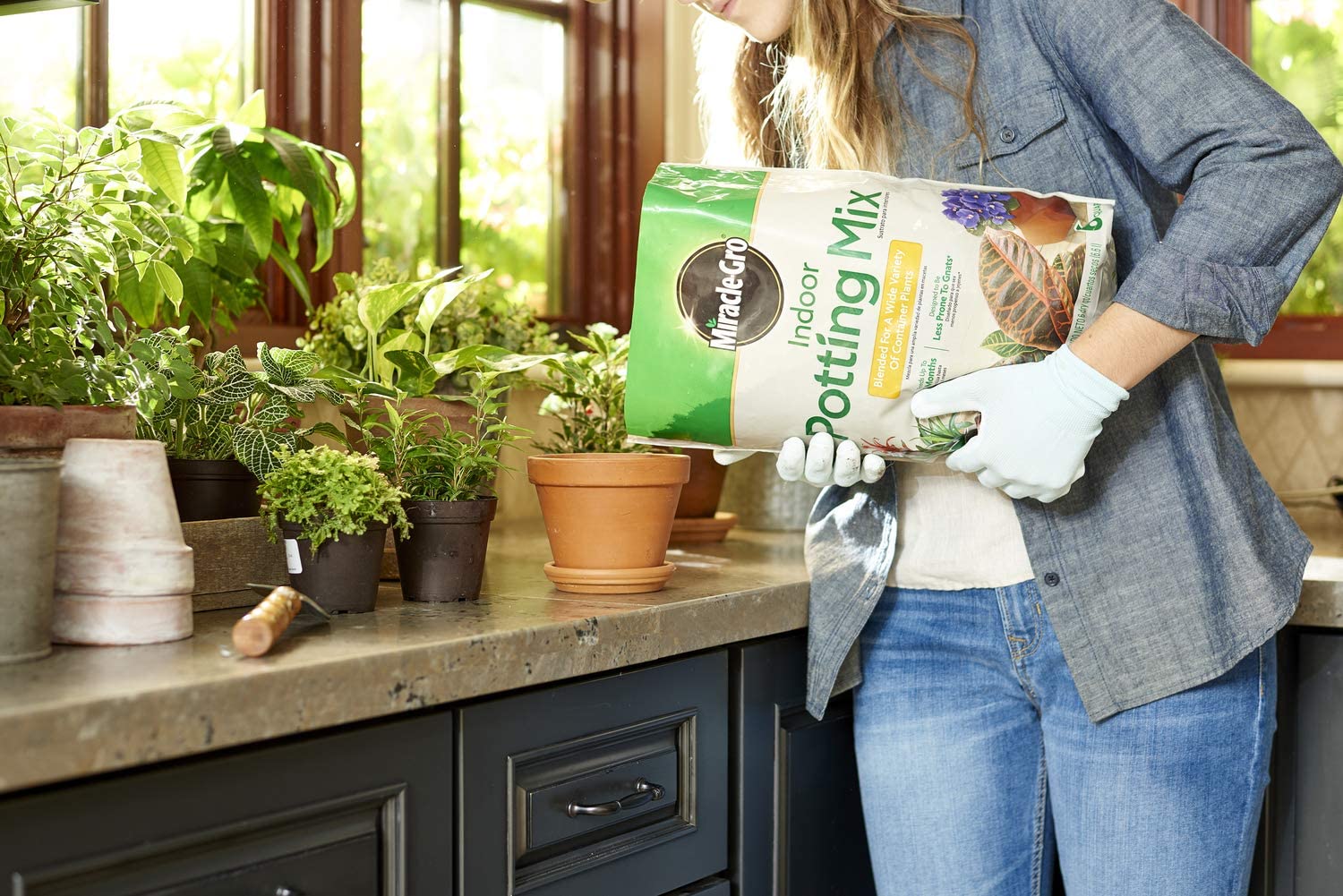
What to Consider When Choosing the Best Soil for Roses
When it comes to choosing the best soil for indoor-growing roses, it’s important to remember that these flowers have particular needs. Below are several factors to consider when shopping for soil to ensure your roses can grow and produce beautiful blooms in indoor pots and planters.
These determinants include the type of soil, the ingredients and nutrients found in the soil, aeration and moisture control factors, and the ability of the soil to resist fungal growth. Read on to learn more.
Type
There are different types of soil you can use when growing roses indoors. These options include traditional potting mix, indoor potting mix, peat moss, fast-draining soil, and seedling mix, with variations in each category.
While traditional potting mix is versatile because it can be used indoors and outdoors, indoor potting mix is specifically designed to provide plants and flowers with more of the nutrients they need to successfully grow indoors.
Peat moss is the material left over when moss decomposes. When used as a potting mix, it releases moisture into the soil as needed, making it an excellent addition to traditional or indoor potting mix when growing roses indoors.
Fast-draining soil supports quicker drainage, which can prevent plant roots from rotting. Seedling mix usually contains a mix of compost and peat moss to provide seedlings with the nutrients and drainage they need to thrive. Remember that roses also need soil with a pH of around 6.5, which is almost neutral on the pH scale.
Ingredients
Most potting soils (or mixes) have different ingredients designed to support plants. Potting mixes actually don’t contain any soil and instead are a mix of different ingredients, including peat moss, coir, compost, perlite, and processed forest products like wood bark.
Some potting mixes contain added fertilizer as plant food, from either organic or animal-derived sources such as poultry feathers, bone ash, fish meal, and more. If you’re concerned about the product including animal ingredients, check the label or contact the manufacturer.
Nutrients
Much like other plants, roses need nitrogen, phosphorus (which can be in the form of phosphate), and potassium to survive. However, additional nutrients, such as calcium, magnesium, copper, and other trace minerals, can help indoor roses truly thrive.
Most soil mixes contain the primary nutrients plants need, including nitrogen and phosphate, but not all will contain trace minerals from which roses can benefit. To ensure these nutrients are present, combine potting mix with compost or another element such as clay or coir, which comes from coconut husks. This can help boost the nutrient content of the soil.
Aeration
Roses prefer well-aerated soil, meaning the soil ingredients and consistency allow the roots to receive plenty of air. Peat moss, coir, perlite, and shredded bark are all ideal to increase the aeration of potting mixes. If you’re using a potting mix that contains ingredients that naturally aerate well, you shouldn’t need to aerate the soil for your roses to blossom.
However, if you’re using a potting mix combined with ingredients like compost and clay, aerating the soil from time to time can help ensure your roses have the oxygen they need. Simply poke holes in the top layer of the soil to aerate it.
Moisture Control
When growing roses indoors, the best soil should drain well. Roses can be fickle flowers; they don’t do well in wet soil, but they shouldn’t dry out too much either. Potting soil or mix that promotes proper drainage is essential. You don’t want the soil to drain so fast that the roots can’t absorb water, but you also don’t want it to drain too slowly to promote root rot.
Peat moss, coir, compost, and shredded bark all tend to drain well and can be optimal for growing roses in containers indoors, including in self-watering planters. However, be sure to monitor the roses to ensure they don’t dry out too much or become too wet when you’re watering them. Simply stick the tip of your finger in the soil to quickly tell if it’s too wet or too dry.
Fungal Growth
Certain potting mixes can be more susceptible to fungal growth. The environment of your roses also matters: Plants that grow indoors year-round, especially in humid environments, are more likely to experience fungal growth than plants that stay outdoors or plants that switch from indoor to outdoor settings.
Overwatering, poor drainage, and poor aeration can all promote fungal growth in the soil for indoor roses. However, if the potting mix wasn’t properly stored before you purchased it, there’s a chance it could already be contaminated with fungus. Fortunately, well-draining soil types, such as those used for roses, are less likely to grow fungus than rich, moist soils.
Our Top Picks
Begin the process of shopping for the best soil for roses when growing them indoors by considering these top picks. Taking the above-mentioned factors into account, including nutrient content, pH level, aeration ability, and drainage quality, these are several of the best indoor potting mixes to encourage ravishing roses in a home or office space.
Best Overall
Miracle-Gro Potting Mix
Pros
- Blend of ingredients leads to good drainage
- Includes immediate and slow-release nutrients to help roses thrive
- Balanced pH
- Good value
Cons
- Soil might harbor gnats
- Not organic
Formulated with peat moss, perlite, and compost, this potting mix from Miracle-Gro features a blend of ingredients that drain well to support the growth of indoor roses. This soil is rich without being too moist. Containing the nitrogen, potassium, and phosphate that roses need to thrive, a portion of these nutrients are in a slow-release formula that will continually deliver food to the roots for up to six months.
The pH of this potting soil is between 6.0 and 6.5, which makes it ideal for growing roses. This potting mix is a top pick due to its nutrient content, well-draining ingredients, ideal pH, and affordability.
Runner Up
Miracle-Gro Indoor Potting Mix
Pros
- Made specifically for indoor growing
- Mix promotes moisture control
- Includes immediate and slow-release nutrients to help roses thrive
- Balanced pH
Cons
- Bag holds only 6 quarts but comes in 2-pack
- Might contain fungal matter and gnats
Miracle-Gro’s indoor potting mix is made from peat moss, perlite, compost, and coir—all ingredients that help indoor roses thrive by promoting moisture control. This potting mix contains no compost or bark, which can harbor gnats. The ingredients provide the nutrients roses need as well as the drainage they require to do well indoors and to avoid falling victim to overly wet soil or fungal growth.
This potting mix contains nitrogen, phosphate, and potassium. A portion of these nutrients is slow-release, meaning they’ll continue to provide indoor roses with food for up to six months. The pH of the soil is between 5.5 and 6.2, which makes it close to the ideal pH for roses.
Best Organic
Espoma Organic Potting Mix
Pros
- 100% natural and chemical-free
- Suitable for indoor or outdoor use
- Helps reduce drought stress
Cons
- Pricier than standard potting mix
This organic potting soil contains from 35 to 45 percent sphagnum peat moss, plus regionally sourced organic materials, such as aged forest products, humus, composted rice hulls, perlite, and limestone. The organic mix is suitable for both indoor and outdoor roses. As an all-purpose mix, this soil can be used with your other plants, too.
Earthworm castings, alfalfa meal, kelp meal, and feather meal provide nutrients for a long, steady feed. Nine species of beneficial mycorrhizal fungi help promote root expansion and efficient feeding. Yucca extract, a natural wetting agent, promotes thorough moisture penetration.
Best Seed Starting
Sun Gro Seedling Mix
Pros
- Specially designed for seed starting for those who want to grow roses from seed
- Includes an organic wetting agent for good moisture retention
- An additive encourages root growth and earlier flowering
Cons
- Not suitable for mature roses
When getting started with indoor roses from seeds, a seedling mix can make it easier to create healthy plants. This seedling mix from Sun Gro contains a blend of peat moss, perlite, and an organic wetting agent that provides the proper moisture retention and soil aeration for rose seedlings to sprout.
Designed to be used on its own, simply loosely pack a pot or planter with the potting mix, plant the seeds, and water. This seed starting mix encourages maximum growth with a proprietary, silicon-enriched additive that can encourage root growth, earlier flowering, and better adaptation to infrequent waterings.
Honorable Mention
Hoffman Canadian Sphagnum Peat Moss
Pros
- Affordable organic product
- Made of peat moss for superior water retention
- Contains perlite for good aeration
- Good value in a 10-quart bag
Cons
- Must mix with compost or potting soil for growing roses
Peat moss is known for being superior at retaining water in soil. It can also help soil retain nutrients, encouraging optimal growth of roses. However, while peat moss drains well and helps soil preserve these nutrients, it needs to be mixed with compost or potting soil to provide superior water retention and aeration for indoor roses.
This organic Canadian sphagnum peat moss from Hoffman also contains perlite and is ideal for growing indoor roses when mixed with soil. It provides excellent soil aeration, moisture control, and nutrient retention. Available in a 10-quart bag for a similar price as products offering smaller quantities, it’s also a great value for indoor rose growers who are on a budget.
Our Verdict
Growing roses indoors in containers requires soil that drains well and provides the nutrients the roses need to thrive and flower. This Miracle-Gro potting soil comes in a 2-pack of 16-quart bags to keep roses growing and flowering. The smaller bags of Miracle-Gro indoor potting soil offer another choice of rose soil that feeds the plants for up to 6 months.
How We Chose the Best Soil for Roses
Drainage and nutrients top the must-have list for soil to support indoor-grown roses. We looked at the type of soil and ingredients to ensure good drainage and feeding. In particular, roses need nitrogen, phosphate, and potassium in the soil or through fertilizing. The addition of organic matter like compost also contributes to nutrition for indoor roses.
Soil also needs to let air reach the roots, so perlite, coir, or other light materials help keep soil from compacting around roots. Aside from good drainage, the soil should not dry so quickly that drought affects the roses, so moisture control is an important feature to consider. Some potting mixes are more susceptible to fungal growth in the bag or once in a pot, but those that boast good drainage are less prone to fungus and gnats.
FAQs About Soil for Roses
Once you’ve found the best soil for growing roses indoors, it’s time to start planting. But first, check out some of the most frequently asked questions about potting soil for indoor roses.
Q. What type of soil does a rose grow best in?
Roses thrive in soil that drains well and is properly aerated, which makes ingredients such as coir and peat moss useful.
Q. How do I make soil acidic for roses?
Adding compost to soil is an excellent way to make it more acidic for roses. It’ll also help provide roses with more of the nutrients they need to flourish.
Q. Do roses like acidic or alkaline soil?
Roses prefer soil with a pH of around 6.5, which is slightly acidic but close to neutral soil.
Q. Why is my indoor rose plant dying?
There could be several reasons. It may not be receiving enough light; indoor roses need about six hours of full sun each day. You may be watering it too much or too little. Another possibility is that you may need to repot the plant to ensure the soil still contains enough nutrients—annual repotting is recommended by some soil manufacturers.
Jenn Ryan is a freelance writer who loves exploring eco-friendly and recycled options for home improvement projects. A Penn State English grad, Jenn enjoys researching and learning new things and is a sucker for reclaimed barnwood floors, green living, and Talavera tile. When she’s not writing, you can find her playing with her two rescued bunnies, enjoying a cup of herbal tea, or running down the road wearing biodegradable glitter.

